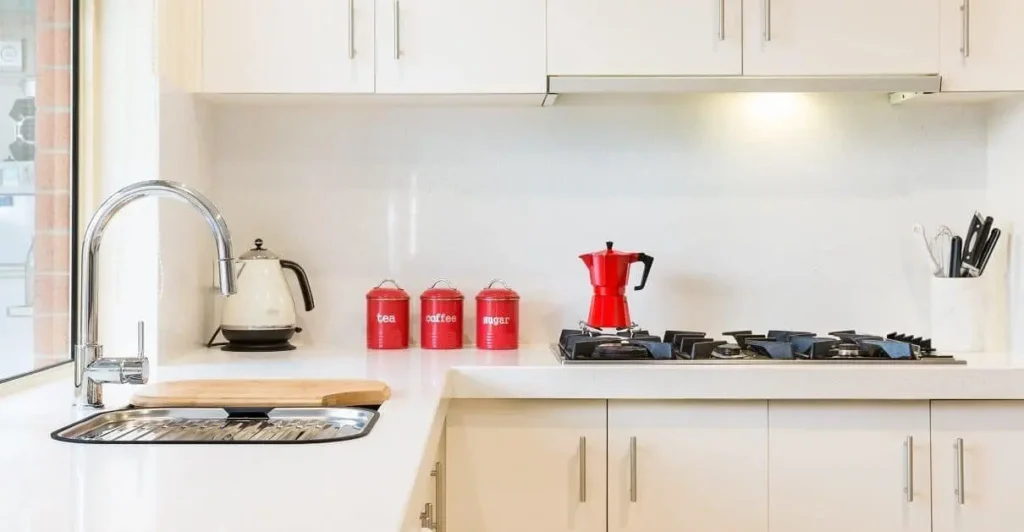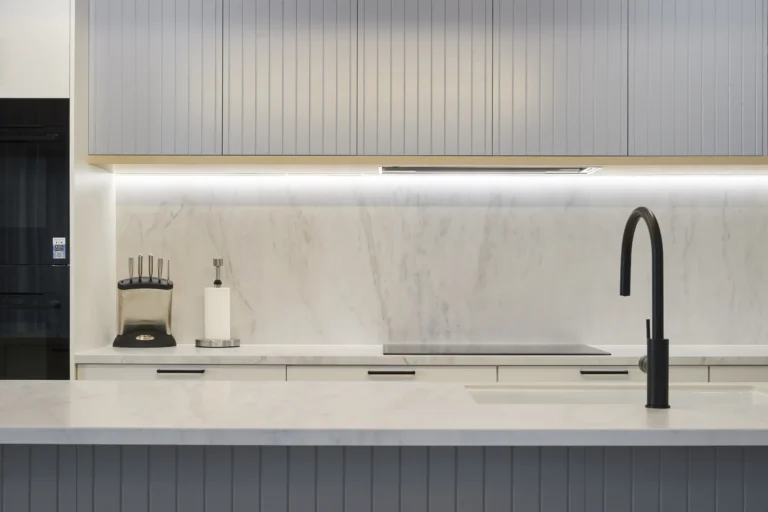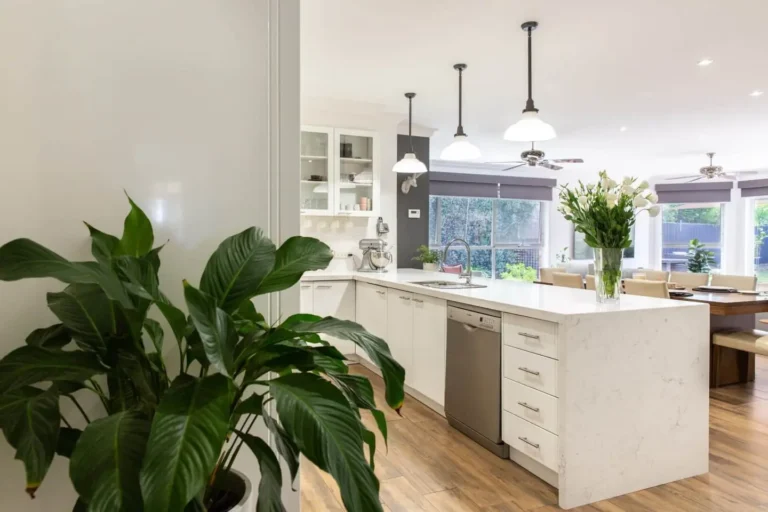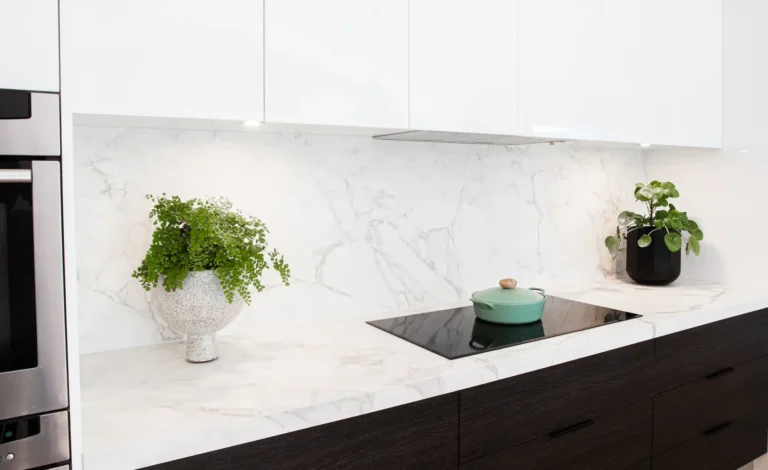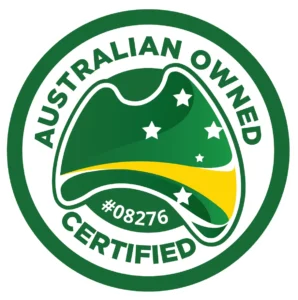Even if you’re the neatest cook on the planet, oil splashes, water, grime, and other food can splash onto the walls. Choosing the right kind of splashback can make all the difference. You need to get the right kind of material so that it won’t stain easily, and thus, can keep your kitchen looking clean for at least a couple of years. Apart from being easy to clean, splashbacks add to the overall theme of the kitchen. Whether you go with a neutral colour or something bright, a splashback is key.
What to Look for in a Splashback
Apart from the look, you need to choose a material for the splashback that fulfils the following criteria:
- Can be cleaned easily and won’t show any marks
- Is durable and not easily affected by things like utensils falling against it, etc.
- Is not combustible or flammable, especially if it’s near the cooktop
We’re going to cover some popular materials for kitchen splashbacks that check every item on that checklist.
Types of Splashbacks
The following splashbacks will help you decide which one is best suited for your kitchen:
Stone Splashbacks
Don’t worry about costs with stone splashbacks as the outcome is definitely worth it! Cheaper ones tend to damage quicker so it will end up costing you more. If you go with something like marble or granite, you can see the stunning galaxy-like veins of the stone across the wall. Most people choose veined-stones if they have plain countertops to create a cohesive look. Apart from these natural stones, people with smaller budgets go with reconstituted stone. This is even better because it is more stain-resistant. A stone splashback is easy to clean, fairly stain-resistant, and durable. For the most part, it’s heat resistant as well, but if it is exposed to too much heat, the stone can crack. If you do install it, make sure to consult with your contractor (unless you’re doing it yourself) and leave a decent amount of space between the burner and the splashback – around 10 cm.
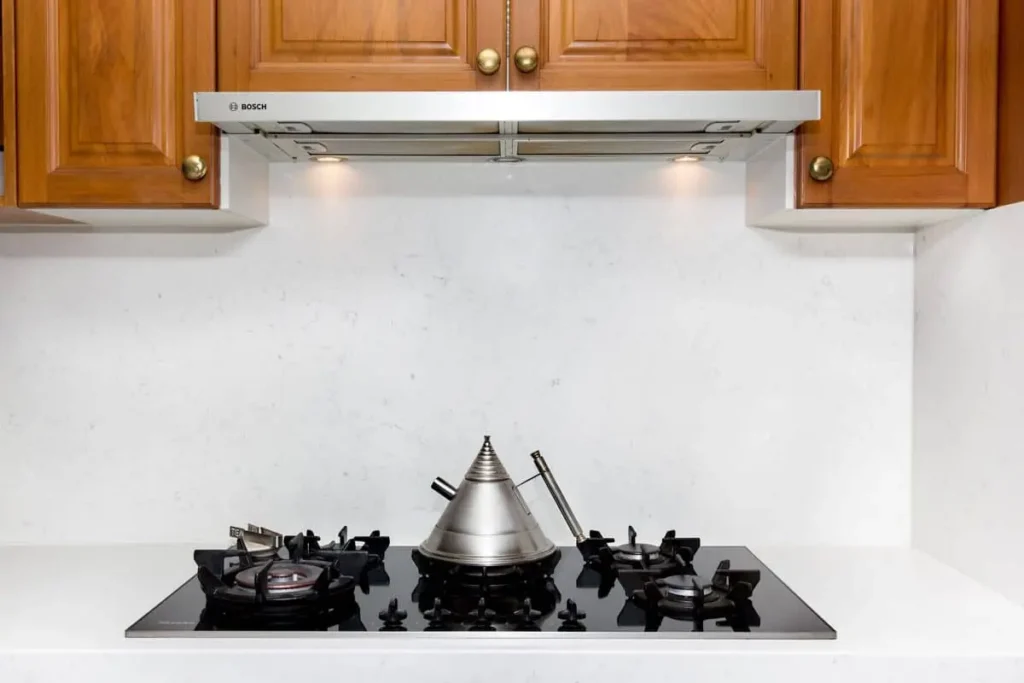
Tiled Splashbacks
Tiled splashbacks are also pretty popular, and you can choose different materials depending on your budget
Glass Tiles
Glass tile can be found in a range of colours, sizes, and patterns. While the material itself may not be too expensive, installing it can be tricky and expensive since the glass needs to be cut properly and installed in such a way that it doesn’t expose the wall behind.It’s really easy to clean, and if you choose high-quality glass, a glass splashback in the kitchen can be quite durable. The quality also determines how much heat it can withstand and whether or not it’s suitable for the wall behind your cooktop.
Ceramic Tiles
If you’ve ever seen a brick pattern in a kitchen, it was most probably made of ceramic. The major reason why many people go with ceramic is that it is one of the least expensive options for a splashback in the kitchen. You can also find a range of colours and textures to match your vision and ideas. Ceramic splashbacks are easy to clean, pretty durable, and, best of all, heat resistant. As with the stone one, you just need to keep a little bit of space, around 10 cm or more, between the splashback and the burner.
Porcelain Splashbacks
Porcelain tiles or a even a full porcelain splashback look great, and they’re very durable and are ideal for tough environments like commercial kitchens. They can also be used for flooring and are ideal if you want a simple, long-lasting kitchen design. Overall, they are very easy to clean and heat resistant, too.
So which Splashback is best for you?
Whichever type of splashback you choose, make sure to get a sample first to. See how it will look before installing it. Give us a buzz today!


